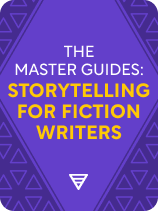

This article is an excerpt from the Shortform book guide to "The Master Guides: Storytelling for Fiction Writers" by Shortform. Shortform has the world's best summaries and analyses of books you should be reading.
Like this article? Sign up for a free trial here.
Do you have a great idea for a story and wonder how to actually get something down on paper? Where should your mindset be? Should you map out the plot first?
When you’re ready to write the first draft of your story, you’ll likely benefit from the wisdom of some experts in the field. We’ve put together some advice from Stephen King, Elizabeth Gilbert, Robert McKee, and others on the drafting mindset and specific drafting strategies.
Continue reading to learn how to start writing a story.
The First Draft Mindset
Our expert advice on how to start writing a story begins with some insights on attitude. Here are three tips on how to cultivate an effective writing mindset.
Tip #1: Don’t wait for inspiration. According to Seth Godin in his book The Practice, creativity is an action, not a feeling. If you want to create art of any kind, you don’t sit around waiting until you feel creative: You put in the work, day after day, and creativity follows. Committing to action can change how you feel and change your beliefs about yourself. Identities like “writer” and “artist” aren’t innate; they’re a choice. If you want to be an artist, make art, Godin says. You become what you do.
One benefit of a consistent practice is that you’re working every day and constantly moving forward, so it’s harder to get “blocked.” You create regardless of whether you want to or not and regardless of whether or not you’re inspired. It’s better to create something that’s not great and work to improve it than to say you’re stuck and not create anything at all.
Tip #2: Focus on the journey, not the destination. As you approach a new project, Elizabeth Gilbert stresses in her book Big Magic that your enjoyment of the creative journey should be your only focus. Let go of any goals or desired outcomes and prioritize the process. According to Gilbert, if you create to receive external validation or to achieve something in particular, you make your creativity contingent upon forces outside of your control. You’re then much more likely to give up your pursuit if you don’t achieve your goals.
Gilbert advises specifically against striving for some perceived form of “success.” You ultimately have little control over your creative success, so to avoid anguish and unhappiness, don’t even aim for it.
Tip #3: Protect your story from the outside world. In his book On Writing, Stephen King suggests that you should close your door when you write your first draft. He means this both literally and metaphorically. Literally, close your study or office door to help you focus and block out the outside world. Metaphorically, write the first draft of your story just for you. By and large, don’t worry about what anyone else thinks. There is no outside world. The story belongs to you.
First Draft Writing Strategies
Stephen King recommends writing your first draft before you know where the story is going. Arranging a plot before you write the story feels artificial. Our lives are plotless—we don’t know in advance what’s going to happen—and that gives life a constantly surprising, entertaining flavor. Writing a story shouldn’t be any different. King believes the story reveals itself as he writes.
Writing this way, without plot, helps in a few ways. First, it creates a more truthful story. If you force the arc to move in a particular way, your characters may behave unrealistically, contorted to fit the plot. In contrast, if you merely observe how characters behave, they’ll be more likely to ring true. Second, this style of writing maintains suspense—if you as the author are held in suspense during the writing, your audience probably will be too. King also recommends you write as quickly as you comfortably can. This keeps your enthusiasm high and limits the extent to which self-doubt can creep in.
Another strategy is to write an outline before you begin the first draft. In his book Story, Robert McKee recommends writers begin with an outline that’s solely an overview of the plot, without dialogue or elaborate scene descriptions. Since you’re essentially writing your entire story in outline form, this step will take up the majority of your time. McKee recommends outlining many more scenes than you end up using. The way to find outstanding ideas is to write as many of them as possible, then select the very best and throw the rest away.
Once you have a complete outline of the story, McKee recommends pitching it to a friend. Tell them the entire story, beat by beat. Keep fine-tuning your outline until you have a story that reliably impacts your friends emotionally. That way, you don’t waste time fleshing out a story that doesn’t work.

———End of Preview———
Like what you just read? Read the rest of the world's best book summary and analysis of Shortform's "The Master Guides: Storytelling for Fiction Writers" at Shortform.
Here's what you'll find in our full The Master Guides: Storytelling for Fiction Writers summary:
- How to capture and communicate emotional magic through fiction
- Advice from successful authors and storytelling experts
- The five steps of writing a story, from ideating to publishing






